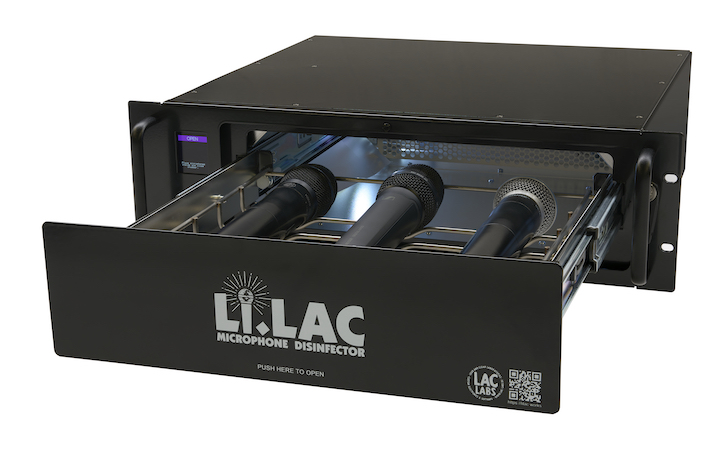Li.LAC Microphone Disinfector Offers Tool for the COVID Era
Story Highlights
Live sports production is mostly back to normal, but COVID-related cautions remain in place. That includes disinfecting often-handled equipment, particularly handheld and lavalier microphones. That process has been largely manual during the pandemic, relying on sanitizer wipes on the mic stalks, headbands, and windscreens.
“Nothing has been standardized,” says veteran NFL A1 Phil Adler, who says his truck keeps a bucket of wipes always on hand for those components. “We’re just using common sense.”
But there are other, more technologically complex ways to keep microphones and related hardware sanitized, including a number of products that use UV-C radiation to kill germs. One such tool just arrived on the U.S. market.
The Li.LAC Microphone Disinfector asserts that it can “kill over 99% of bacteria and viruses on microphone surfaces, metal grilles and the windscreens underneath,” based on testing by the Biomedical Engineering Department and the Medical Microbiology & Infection Prevention Department of the University Medical Center in Groningen, Netherlands. The 32-lb., $1,599 unit is road-ready in a 19-in. 3RU rackmount format.
It’s pricey, but Li.LAC touts its German design and technology as well as its efficiency. (“LAC” stands for Loud and Clear, the engineering company of the designer, Tobi Hoff, who’s also the longtime FOH mixer for the band Deep Purple.)
It can disinfect up to three handheld microphones or several lavalier or headset microphones, headsets, or beltpacks simultaneously in less than 12 minutes after its drawer is closed. For operator safety, a kill switch turns the unit off if the drawer is opened before the cycle is completed.
Manufactured in Europe, the Li.LAC Microphone Disinfector is available in the U.S. from iSEMcon or can be purchased online at https://www.isemcon.net/shopus/. According to iSEMcon President Win Otto, the design, manufacturing, distribution, and marketing firm specializing in acoustical-measurement microphones and accessories plans to begin manufacturing the device in its Toledo, OH-area plant sometime next year, as supply-chain issues allow components to become available.

